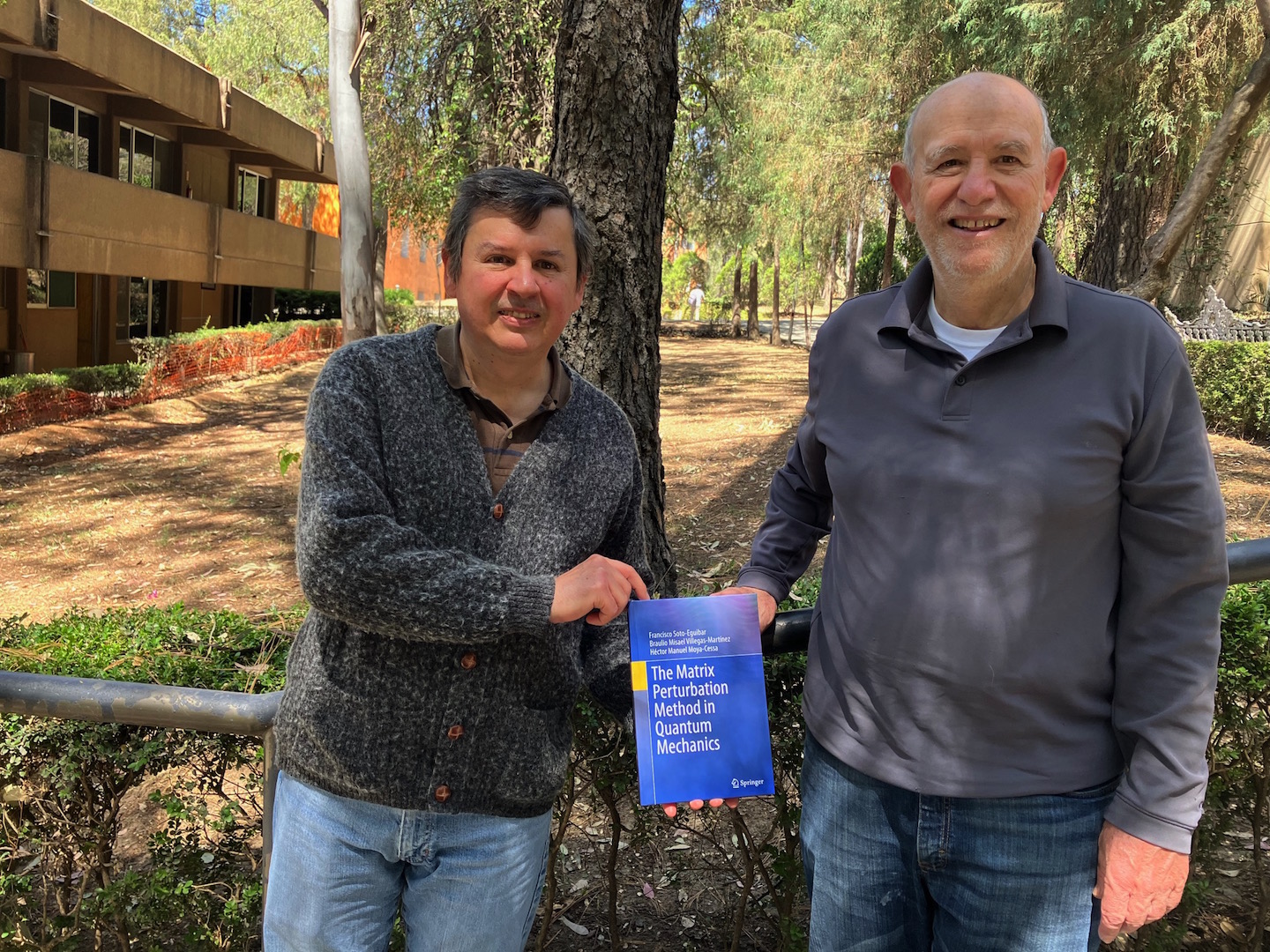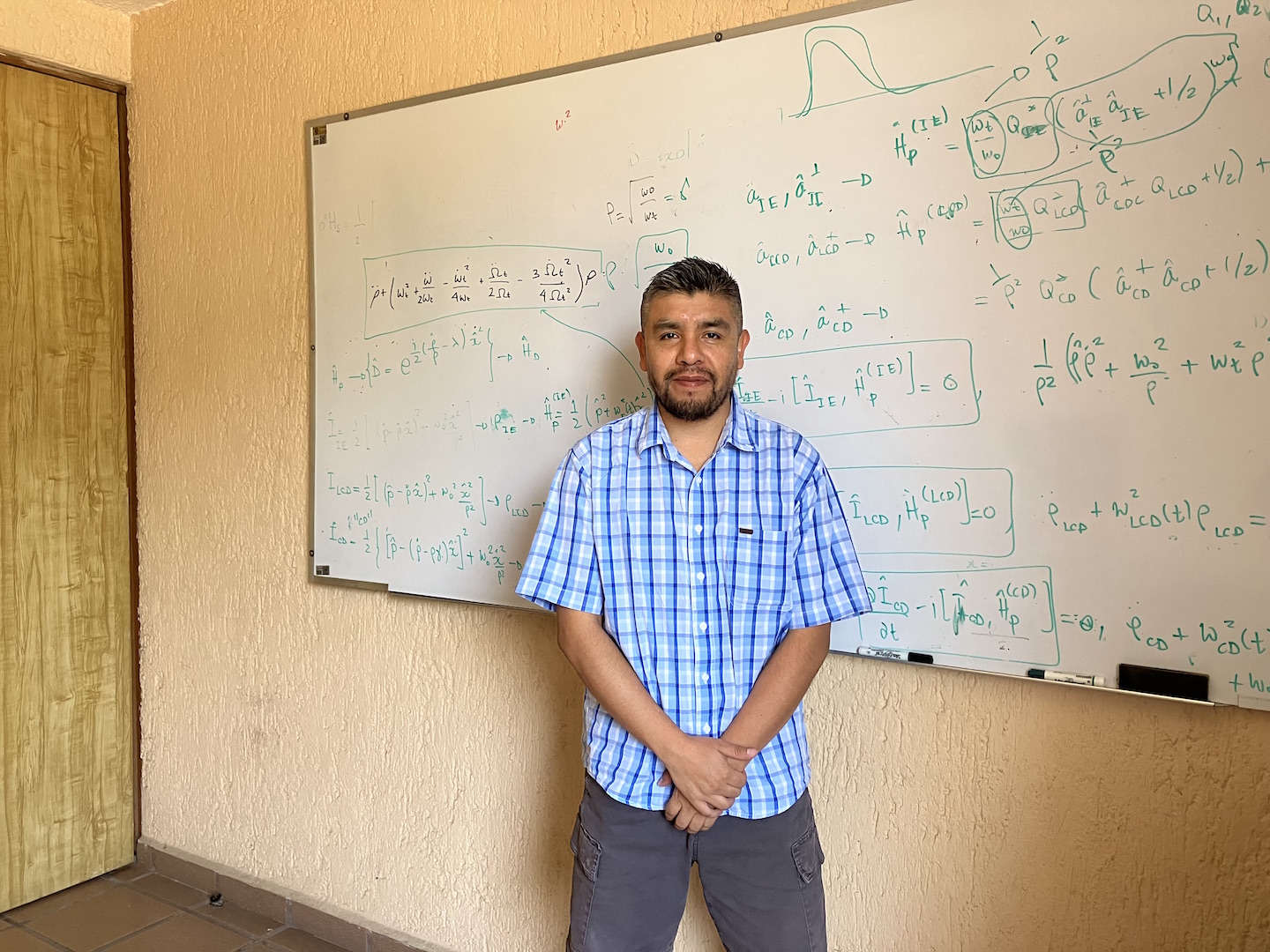The revolution of quantum mechanics
- In 1925, Werner Heisenberg and Erwin Schrödinger laid the foundations of quantum mechanics.
- The UN proclaimed 2025 as the International Year of Quantum Science and Technology.
- For more than 30 years, INAOE has conducted research in the field.
Santa María Tonantzintla, Puebla, February 5, 2025. With the objectives of recognizing the contributions of quantum mechanics in science and its impact on everyday life, and celebrating the centenary of scientific discoveries that revolutionized our understanding of the universe, 2025 was proclaimed by the United Nations (UN) General Assembly as the International Year of Quantum Science and Technology.
In 1925, Werner Heisenberg and Erwin Schrödinger laid the foundations of quantum mechanics. At the National Institute of Astrophysics, Optics and Electronics (INAOE), a center of the Secretariat of Science, Humanities, Technology and Innovation, theoretical research is carried out in this branch of Physics that studies matter at the atomic and subatomic level.

Francisco Soto Eguibar, Héctor Moya Cessa and Irán Ramos Prieto, researchers of the Optics Department, are part of the Quantum Optics Group of this Institute. In an interview, they briefly talk about quantum mechanics, a fascinating branch of Physics.
INAOE has a tradition of more than 30 years of research in the area of Quantum Optics. Dr. Irán Ramos reports that theoretical research is carried out at this center, as is the case in almost all institutions that study the area in Mexico: “We investigate the interaction of light with matter, both understood as quantum entities.” The group, in addition to carrying out basic research, also trains and advises graduate students: “Young people are interested, but they still feel a certain fear.”
For his part, Dr. Francisco Soto Eguibar relates that until 1900 Physics explained the meso and macro-worlds, that is, what we see and experience in everyday life: “That Physics was incredibly successful, but right at the end of the nineteenth century and beginning of the twentieth many phenomena that simply could not be explained with that Physics, began to emerge. From 1920 to 1928 a new and totally different Physics, with incredibly revolutionary concepts, had to be created.”

Quantum mechanics began to take shape at the beginning of the twentieth century, when Max Planck, Albert Einstein, Niels Bohr, Werner Heisenberg and Erwin Schrödinger developed theories that challenged classical ideas about matter and energy. In 1925, Heisenberg and Schrödinger made fundamental advances that established the basic principles of quantum mechanics.
“There are many more, such as Bohr’s students, Louis de Broglie, but all of this culminates in two independent works: one by Heisenberg and another by Schrödinger. Heisenberg invented matrix mechanics and Schrödinger invented wave mechanics. It was in 1925 that Schrödinger demonstrated that the two are the same version of a more abstract general theory,” he explained.
The works of Wolfgang Ernst Pauli and Paul Dirac are also fundamental: “Quantum mechanics was already finished in 1928 when Dirac made the abstract formulation of it, but 1925 is very important because, although Heisenberg’s article is from 1924, he returned to Göttingen where he worked with Max Born and Pascual Jordan, who developed his lines. Schrödinger developed his part and he did this rather in 25,” emphasizes Dr. Soto.
This development revolutionized science and challenged our understanding of matter, says Dr. Moya. For example, everyone has an image of an atom with a nucleus and an electron orbiting around it: “The only theory that can describe the atom is precisely quantum mechanics. On the other hand, the radii in which the electron can be are defined by quantum mechanics, the electron can jump from one radius to another without passing through the zone in between both. There is a prohibition that the electron be at a certain distance from the atom, it can be in one or the other, but not in the middle of both. And how it goes from one side to the other, nobody knows. In addition, the electron can be in one radius and in another at the same time without being in the middle.”
Dr. Moya pointed out that the laser theory cannot be understood without quantum mechanics and that it has many applications in medicine.
In this regard, Dr. Soto elaborates: “If you have an electron and you don’t observe it, it is nowhere and it is everywhere at the same time. The electron does not have a position in certain states and at the same time it is everywhere. If you transfer the example to a cat, it can be black or white. A classic cat is black or white, it simply has two possible states and only occupies one. But quantumly we know that a cat is neither black nor white, it is both things at the same time without being either, it does not possess the property of color, only the possibility of being black or white. And when you observe it, there is a phenomenon called the collapse of the wave function, the cat acquires the property of being black or white, with possibilities that are totally random, but well defined by quantum mechanics. Nobody quite understands that kind of thing. There have been more than a hundred years of development in this regard and interpretations and ideas continue to emerge about what is happening in the microworld because we cannot transfer our ideas from this macroworld to the microworld. Things behave radically differently there.”
Quantum mechanics has revolutionized not only science, but also technology. Without it, positron emission tomography, magnetic resonance imaging, lasers, solar cells, atomic clocks, and other everyday technologies would be impossible.
On this subject, Dr. Irán Ramos explains that, as technology advances to smaller scales, phenomena arise that classical physics cannot fully describe, and quantum mechanics offers the appropriate answers.
This has led to the development of new areas, such as quantum computing. “Quantum computing already exists. In traditional computing, bits can only be in state 0 or 1, but in quantum computing they stop being bits and are called qubits, which can exist in a superposition of both states simultaneously. Although we still do not fully understand all its scope, we are using one of the fundamental tools of quantum mechanics, superposition and entanglement, to improve computing. Quantum computers work under this principle: while a classical bit can only be in one defined state (0 or 1), a qubit can be in both at the same time, which gives it enormous processing power.”
He also comments that quantum mechanics has been key in the development of modern technology: “Mobile phones contain transistors whose behavior, at very small scales, can only be correctly explained by quantum mechanics.”
Dr. Soto points out that the ideas of quantum mechanics have transcended all sciences: “in biology, they study that plants that function with quantum phenomena. Photosynthesis, for example.”
To conclude, Dr. Irán Ramos reports that INAOE will join the celebrations of the International Year of Quantum Science and Technology with events throughout 2025, which will be announced on the institutional portal and on social networks.
Luis Enrique Erro # 1, Tonantzintla, Puebla, México, Código Postal 72840, Tel: (222) 266.31.00, difusion@inaoep.mx
This work is licensed under a Creative Commons Attribution-NonCommercial-NoDerivs 2.5 Mexico License.


